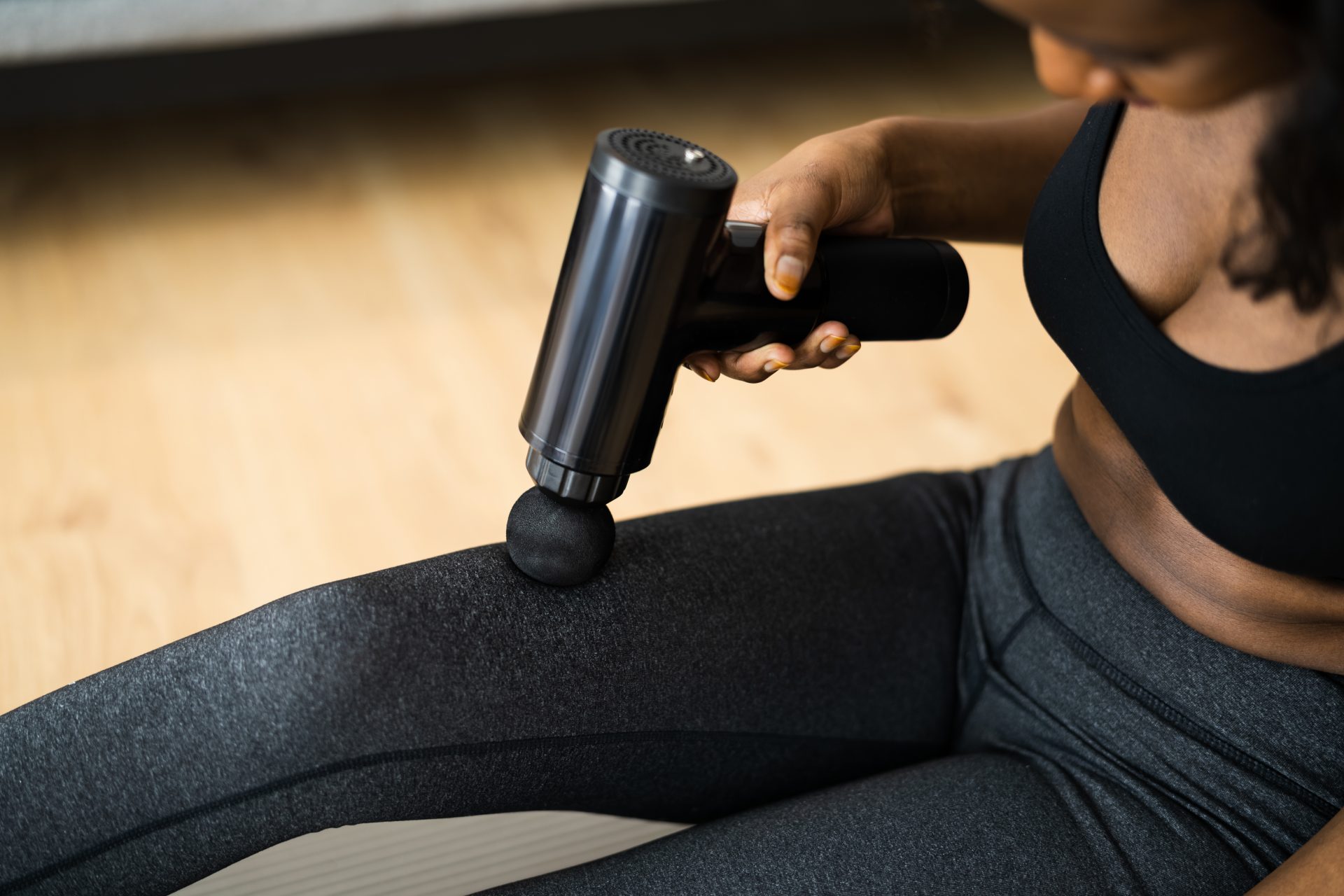Massage guns seem to be everywhere at the moment, but how effective are they at shaking out sore, stiff muscles after a long run or tough strength session? If our experience is anything to go by, we might never need to foam roll again…
Ever heard of self-myofascial release? The chances are that while you’re not clued up on the lingo, you’ve probably done it before – in the form of foam rolling. Rolling works deep into the muscle to relieve tightness, muscle soreness and inflammation, which in turn increases your range of motion and keeps you moving pain-free for longer.
But if like me, you find foam rolling both painful and boring, the chances are that you’re skipping this crucial muscle recovery step. I’m a long-distance runner and in true marathoner style, I’m a total wuss when it comes to any kind of muscle release other than being gently rubbed down in a spa with wind chimes clanging around me. That’s obviously no good; putting our bodies under intense, sustained pressure (like marathon cycles) results in overly tight muscles which, if left unattended to, can become injury-prone.
You may also like
“My fitness tracker helped me learn to love interval running”
Why self-myofascial release is important
Recovery after any kind of exercise is one of the most important aspects of training. If you’re strength training, that rest period is where your muscles repair and grow; if you’re running, the rest allows you to hit the road again without repetitive strains.
A 14-study review found that self-myofascial release (SMR) using either foam rolling or roller massage reduces the intensity of muscle soreness after intense exercise as well as protecting against the reduction in muscle performance.
While there’s not a lot of evidence available about SMR yet, it has become a staple in many running rehab regimes. Given my foam rolling aversion, however, I’ve found something that suits me far better: a massage gun.
Massage guns have sprung up in popularity in the past few years as a thoroughly brilliant way of hitting hard-to-reach, tight muscles. Theragun is probably the biggest brand but others exist such as Powerplate and MyoLite. These guns use a different kind of movement to release tightness: vibration massage therapy.
Why use a massage gun?
A 2014 study compared the effect of vibration therapy and massage in the prevention of delayed onset muscle soreness (DOMs). 45 healthy women were split into three groups (vibration therapy, massage therapy and no therapy) before being asked to do eccentric exercise. They were then evaluated for changes in muscle soreness, range of motion, one rep max capacity and others, up to 72 hours post-exercise.
Researchers found that muscle soreness was significantly less for the vibration and massage groups, compared to the control group, and the same groups experienced significant recovery after 48 and 72 hours. The vibration group was also showed to have significantly less lactate dehydrogenase (high levels of which can indicate tissue damage) 48 hours post-exercise, compared to the control group. It concluded that massage and vibration therapy were equally as effective post-exercise. But how many of us can afford to get a massage after every strength circuit or long run?
A mini massage gun costs around £175 which may seem like a lot but given that the average in-person massage costs upward of £50 per session, you don’t have to use it many times before you’ve broken even.
A study from last year looked specifically at how effective handheld percussive massage treatment was in increasing flexibility and performance and accelerating recovery. It got 16 men to do a workout on a stationary bike before having measurements taken.
The study was the first of its kind to examine the effect of a five minute massage of the calf muscles on the range of motion and muscle performance of the plantar flexor muscles (in the foot). “We observed an increase in ROM,” the authors concluded, but no change in muscle performance torque (a measure of force that causes rotation) output. “Therefore, we suggest including a percussive massage treatment in a warmup regimen to optimise the flexibility level of an athlete, without losing muscle performance.”

Do massage guns work?
I’ve been using a Power Plate Mini+ (£179.95) before heading out on my runs. Currently training for my second ultra-marathon, I’ve been plagued with crippling tendonitis for months and I wanted to see whether using localised vibration therapy on my glutes, hamstrings, calves and soles of the feet might in some way help to loosen up my ankle tendons.
For the past few weeks, I added five minutes of massage gunning to my warm-up routine. While I’m getting ready, I give my feet the once-over, and a quick blast around the calves. Then I stretch, go running and do a longer session that goes over every part of the lower body on my return. And I can honestly say that I’ve seen some brilliant results.
Recently, I ran 30K – the longest run I’ve been able to do in one go for over a year and certainly, the longest run I’ve done without searing pain from my ankles hindering my enjoyment. While a good amount of rest, strength training and stretching all played a part, I’m convinced that my Mini+ helped to loosen me up before heading out and that I was far less tight by the time the run came around thanks to a regular regime of gunning.
Am I going to keep on using it? Absolutely. As my training increases, I’m going to be relying on this massage gun more and more. My DOMs aren’t as bad as usual and as soon as I feel stiff, I can give the muscle in question a good blast – and feel instant relief.
Ready to take your running up a notch? Join our Strength Training for Runners four-week plan to run faster, longer and stronger.
Image: Getty
Source: Read Full Article
